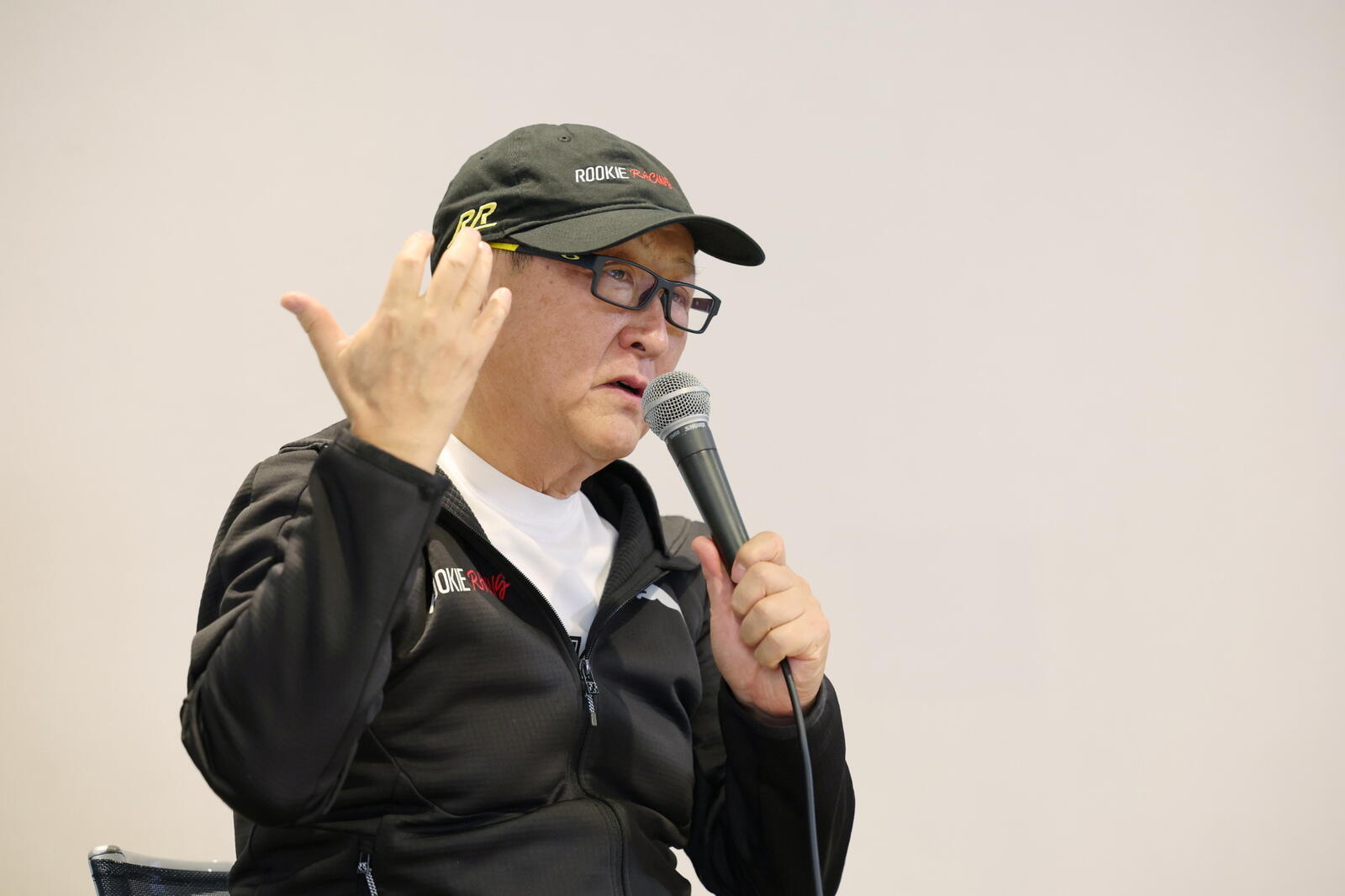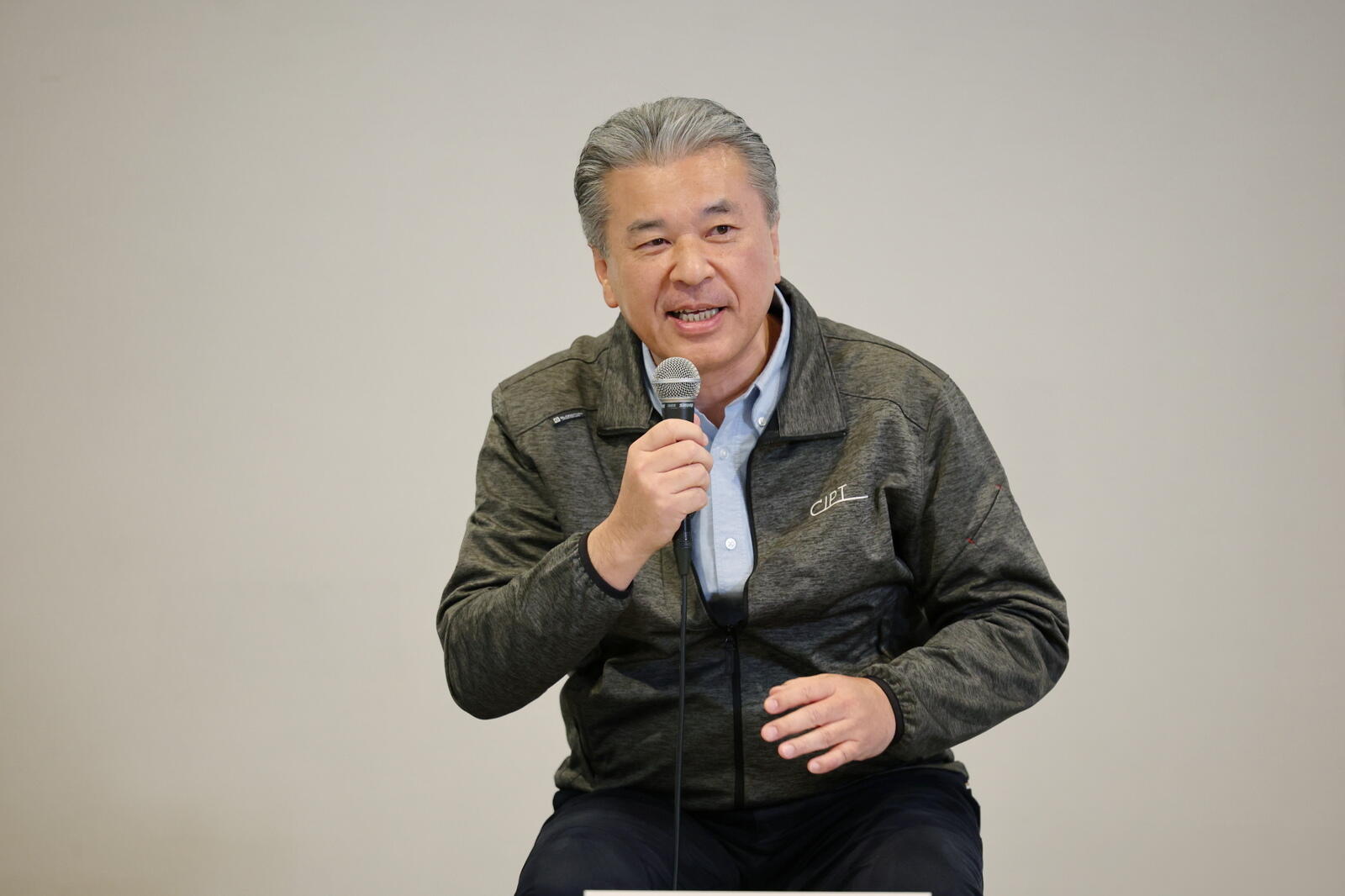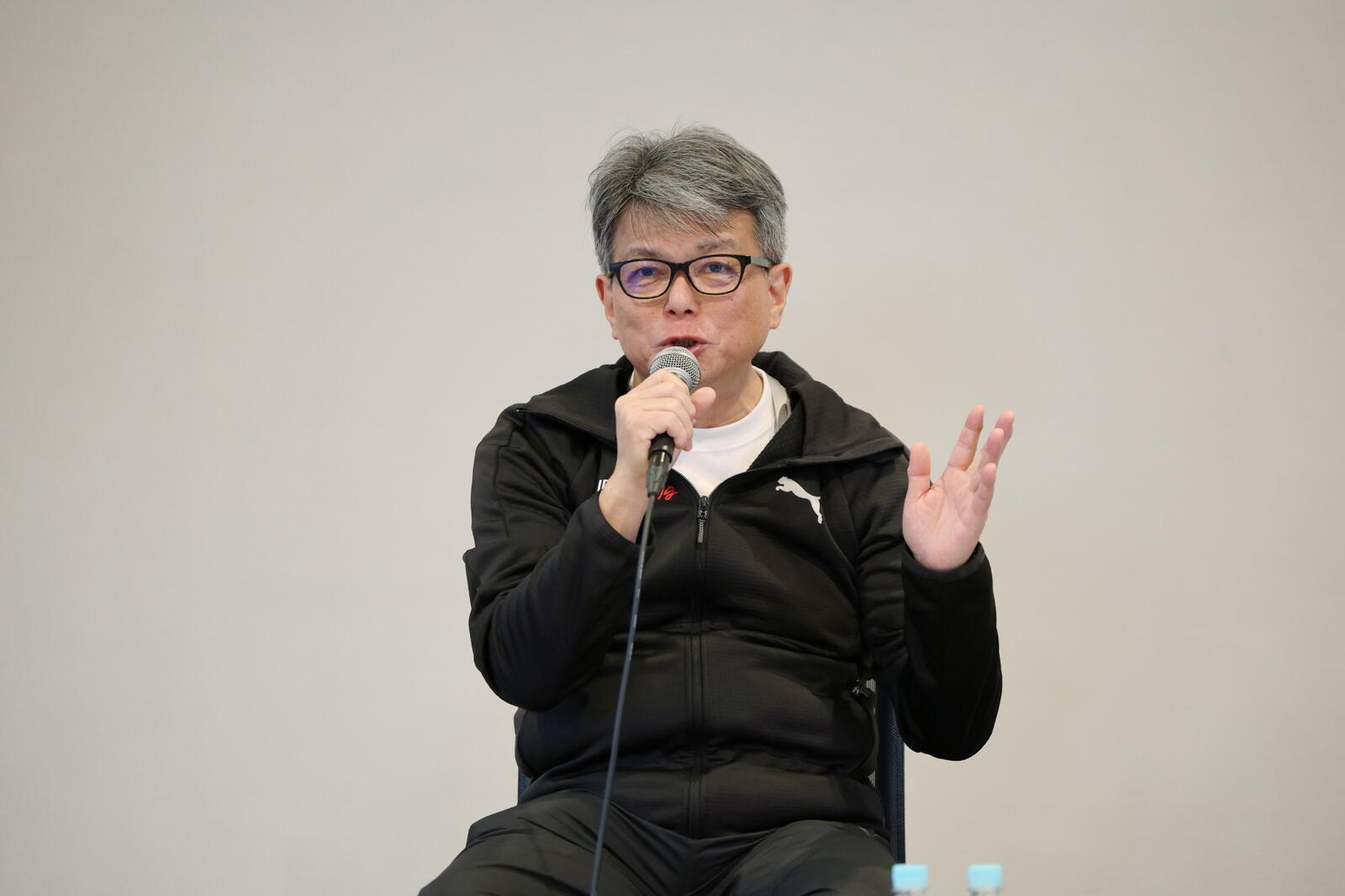
Three years after the hydrogen-powered Corolla began racing in the Super Taikyu Series, the 2024 season's final round featured announcements of new initiatives toward creating a hydrogen society.

Cars running on hydrogen initially struggled to shake off the fuel’s dangerous image and association with explosions. By personally sitting behind the wheel to race in Super Taikyu, Chairman Akio Toyoda—aka Morizo—has helped people to see hydrogen not as unsafe, but as the future.
Race-driven development accelerates hydrogen shift
On November 16 and 17, a grand thanksgiving event was held as part of Super Taikyu Round 7, the 2024 season finale at Fuji Speedway. Speaking at a press roundtable between qualifying rounds, Akio shared the following words.
Chairman Toyoda

Various industries have set out their own visions for creating a hydrogen society, but through the efforts we have made while racing in the Super Taikyu ST-Q class, the number of supporting companies has grown from some six initially to nearly 30 today.
In that sense, I think that our efforts on the racetrack are advancing the idea that the future is something we all build together.
There are several races throughout the year, which determine our development deadlines. These deadlines give rise to various agile development goals, such as working out our top speed or hydrogen refueling volume by the next event.
Competing on the racetrack makes it easy to see where we stand at any given time.
Although the speed of regulation by the national government is still not quite in step, we have established an unprecedented level of cooperation towards creating a hydrogen society.
I think speed is of the essence. We hope many people will support us to ensure that, as the country that kickstarted these (hydrogen) efforts, Japan does not suddenly find itself left far behind.
Akio was joined at the discussion by Toyota Motor Corporation’s vice presidents, Hiroki Nakajima and Yoichi Miyazaki, who followed up on his comments.
Vice President Nakajima

When we talk about producing, transporting, and using hydrogen, Morizo has literally risked his life on the racetrack to propel the “use” side.
On the transporting front, after starting from zero we have gradually developed our ability to carry hydrogen, and with backing from METI, our capacity has steadily increased. We have also battled with regulations. Each time we move forward, the next mountain comes into view.
With our development team always thinking ahead to the next deadline, the transportation side continues to evolve through motorsports.
In terms of production, we also have many people within the group working on producing hydrogen through electrolysis.
Three years ago, we started with an idea. In just three years, it has grown into a major movement. I believe this is thanks to the emphatic support of everyone here today, and the dedication of the developers who continue to answer the call.
Vice President Miyazaki

To achieve a hydrogen society, I believe we must work to lower the price of hydrogen.
This will require assistance from the national government. And, alongside regulation,we are conducting a wide range of trials and public rollouts in various locations with the cooperation of local governments to figure out the best way to produce and transport hydrogen as efficiently as possible While we can’t compete with other countries on volume, we want to make concerted in-house efforts to lower the price of hydrogen in Japan, then take this overseas, using Japanese technology and expertise to pave the way for a hydrogen society.
Customers determine the options
At the roundtable, Chairman Toyoda was also asked about decarbonization options and what was needed to accelerate the creation of a hydrogen society.
Chairman Toyoda
I believe (carbon-neutral options) ought to be determined by customers and markets. We have managed to build up the strength to provide many different choices.
Although we are able to offer various options, no individual company can decide what’s best. Within the context of each country’s energy policy, infrastructure development, and energy prices, I think it’s important for the market and customers to determine the options and create the future.
Different solutions for different countries
Also in attendance was Futoshi Kono, Deputy Director-General of the Economic and Industrial Policy Bureau at the Ministry of Economy, Trade and Industry (METI). Until four years ago, Kono had served as the director of METI’s Automobile Division, and the session’s moderator invited him to comment.
Kono
As Chairman Toyoda indicated, the optimal energy policy solution for a given country depends on its geopolitical context.
The optimal solution for Japan will not be the ideal course for all countries, and we must consider the way forward based on the assumption that measures adopted elsewhere will not necessarily be best for Japan.
While the course of decarbonization is steadfast, I think it is natural for countries to follow different approaches. Since my time as the Automobile Division Director, we have formulated policy with the idea that countries should follow their own paths to carbon neutrality, and I don’t foresee a shift in that stance.
I believe the question of which technologies are ultimately adopted will be determined by competition in innovation and market decisions, and in steering these forces, I think it is important to adopt a more medium-term view rather than a short-term perspective.
With regard to hydrogen, I believe that speed is crucial. Since this will be influenced by geographical factors—where hydrogen is produced, transported, and used—we hope to see the formation of teams that will expand the range of applications beyond cars, and pursue this project with the understanding that a certain price difference will exist in the medium term.
While developing related facilities, we will also look to relax regulations as necessary and focus governmental resources on the sector.

